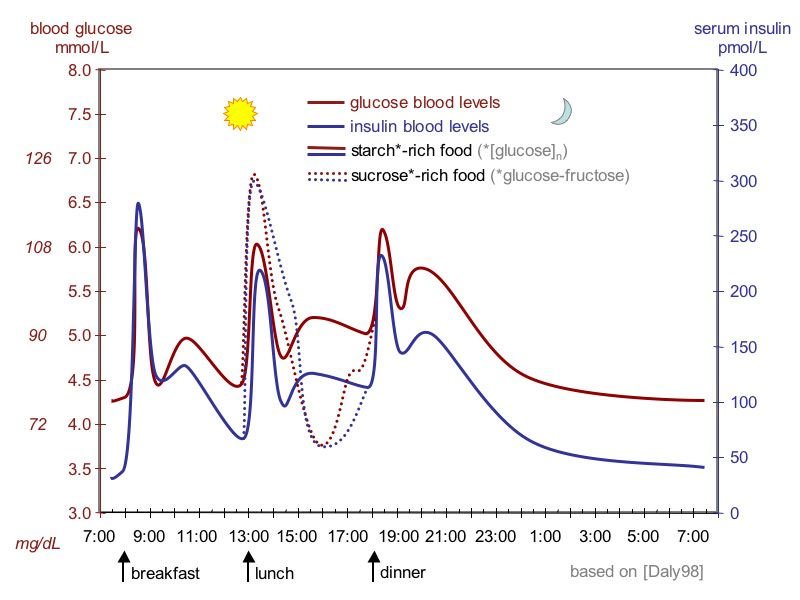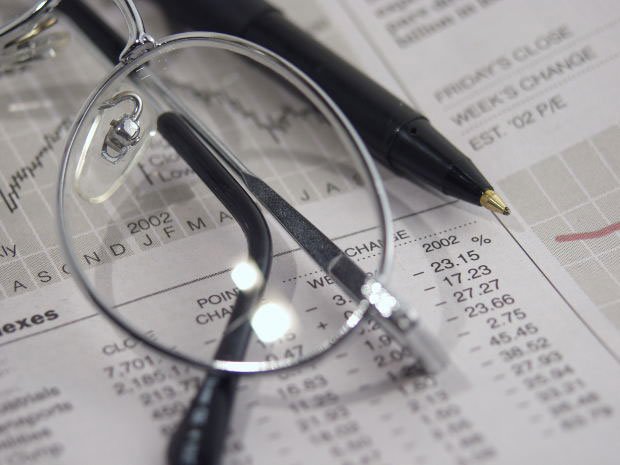Have you ever wondered why, after all the exercise and healthy eating you do, you still can't shift that last bit of fat? You hit the gym four to five times a week or more, you even try to get a run in over the weekend and on top of this you're eating all the healthiest food you can find; despite this your still not super lean like you want to be. I have the answer to your nightmare - Insulin sensitivity.
Insulin sensitivity will eventually replace the term "weight loss" and "fat loss" as the new hot topic. Insulin has a powerful ability to prevent fat breakdown by its anabolic (rebuilding) properties.
Few health and fitness professionals know or understand Insulin sensitivity (IS) which is why its no wonder that the every day man or woman is finding weight and fat so difficult to lose; it's incredibly hard to win against an obstacle you don't know is there!
Let me explain Insulin's role and how it's sensitivity changes depending upon how close you are to your weight and fat loss goals.
Insulin Sensitivity
You might remember the hormone Insulin from articles referring to muscle gains due to its anabolic properties. Well further research into Insulin action shows that these same anabolic tendencies also affect the fat cells1. What most people don't realize is, Insulin also targets the fat, liver, and muscle cells when it is released1. This is not the only problem, though.
A review of the research tells us that IS is actually increased when you lower your weight or body fat percentage2,3,11. It's also important to note that IS gets stronger the more you work out. The catabolic effect of exercise increases IS during a work out and for about 30-45 minutes post workout3.
This means as a healthy exercising individual you simply can't eat the same amount of carbohydrate food that you did before and expect to keep getting better results.

It's important to note that Insulin is sensitive to both carbohydrate and protein consumed, but not fat4. However, of all the food sources, it's the higher carbohydrate meals that elevate Insulin levels the most after a meal5. (See diagram below and look at lunchtime reading.)
Even though there are individual differences to IS levels depending upon your metabolic type, the evidence strongly suggests that the leaner and lighter you become the stronger your IS levels will be. This means carbohydrates (and protein to a lesser extent) are producing a bigger and more powerful anabolic effect the closer you get to your weight loss/body fat goals.
Self-Preservation
It seems the body has a way to protect the ever reducing mass of itself as it gets smaller and smaller by ramping up its IS. It also protects itself from too much exercise induced catabolism by making you more IS around your workouts. Why does the body do this, you might ask? This is a good question, but the body has a very good answer: protection and survival.
Imagine the scenario - a body that could just keep losing weight without any self checking system! "Heaven!" I hear you say, that is until you realize that this body would be in danger of wasting itself away. If your body was without any anabolic or rebuilding effect, critical tissues, such as connective ligaments and tendon absorption would occur, muscle wasting would be uncontrolled and shutting down of vital systems in the body would happen next.
If the body could be in a constant state of catabolism the body could break itself down into an unrecoverable state! Constant catabolism isn't just limited to energy sources either, being dangerously low on certain nutrients could mean you might leech them from an eye or a section of nerve tissue or other vital organs and body parts.
There is more and more evidence to suggest the body already performs such processes as these as we see osteoporosis and varying degree's of vision in people as well as an array of bone and joint problems, to name but a few.
The evidence is out there to suggest the body leeches nutrients from other parts of itself if it is not obtained from the diet6,7,12. Without a rebuilding response from the body, it would be unable to get bigger and stronger or recover properly from exercise and stress. This is why Insulin is so important and so is a variable rate of IS.

Insulin's Role
Insulin's role is protective of the whole so that body parts can rebuild and maintain integrity of internal systems as well as keep energy stores at an optimum and safe level.
Insulin and IS is a very good protection system, but like all systems it can be manipulated, you just have to know how. IS is a pre-programmed mechanism responding to the amount and sweetness of the carbohydrates (carbs) that we eat.
Everybody has a unique set IS level which is governed by many internal factors that can be measured by determining your metabolic type4. Despite some people having a lower IS level and a slower Insulin response who are better adapted to eating carbs in their diet, there is still a vast majority of people out there struggling to get to their fat and weight loss goals from having high levels of IS and strong Insulin responses.
What this really means though, is not that our bodies have become stubborn fat burners, it's that even the healthiest of food available today is still a little too high in carbs for most of us. Your IS is really highlighting that your current food is still a bit too refined and sweet for your needs.
Carbohydrate Usage
You can appreciate this a lot more when you realize that there are eight essential amino acids and eight essential fatty acids required for life. These same nutrients are used all over the body for normal and constant metabolic processes such as repair of hair, skin, bone, muscle, red blood cells. Fat is used for energy purposes, protein only in ketosis.
Compare this to carbs, which have a very limited role around the body, in fact it's only the brain that needs carbohydrates as a fuel source, most cellular processes are happy using fat. That's one of the reasons why we are designed to carry so much of it around with us.
Carbs do provide us with fiber and minuscule but essential amounts of vitamins and minerals which are very difficult to store (unless they're fat soluble), and if they're not used at that time, they are passed through the body very quickly6.
This means the main role of carbs is to top up the liver and muscles which are not as big a store as some people would realize. A closer look at the anatomy of a person reveals that the human liver can hold approx 80-100g of carbohydrates and the muscles can only hold 1-2% of carbs by volume, known as glycogen.
Glycogen Storage
The exact amount of how much glycogen you can store is dependent upon how much muscle mass you have and how intense your training. Individuals need more carbs if they train at higher levels of intensity as the main fuel used is glucose. This is why there is a greater storage effect after this type of training, called supercompensation7.
It's a long conversion to find the muscle volume of a person and then work out 1-2% of that volume and finally convert that volume to mass. But if you take an average of 1.5% storage capacity for muscle glycogen and then work out a range of muscle mass (in this case men) from the literature at 38.4kg for distance runners and 58.7kg for bodybuilders8, then glycogen storage capacity is only 97-150g from my calculations.
Add on the liver store of 80-100g and you are looking at total capacity of 177 - 250g of carbohydrates that the body can realistically store (Women should use the small figure as an accurate reflection of what glycogen stores they can hold.). This is not a lot of carb intake per day if you consider we are, or should be, using fat as a fuel source for most of the day for most of our bodily processes and never get to a point of complete depletion.
| athlete | muscle mass | Muscle Glycogen Storage | Combined Glycogen Storage |
|---|---|---|---|
| Distance Runner | 38.4kg | 97g | 177g |
| Bodybuilder | 58.7kg | 150g | 250g |
Fat Usage
I'm sure nobody really likes fat, but I have to say it's an incredibly powerful fuel source. Very little fat can provide energy for extensive periods. It is reported that 3% body fat is enough energy for someone to run 2 consecutive marathons together8.
Quite clearly we are built to run on fat and use carbs sparingly, otherwise our anatomy would be completely different and be built the other way around, meaning small fat deposits in our livers and muscles with plenty of carbs built around us.
A good analogy would be - why build a car with a tiny fuel tank? It would make sense to design a car with a much bigger fuel tank and a richer fuel supply that was at least twice the energy capacity of most fuel without any extra weight:
Fat = 9 Cals per gram, Carbs and Protein = 4.2 Cals per gram
A much more intelligent design would be to store the most potent fuel in an unlimited area and then add the idea of a turbo charger that could boost performance temporarily for stressful or strenuous circumstances for a perfectly designed machine. This smaller reserve for high octane fuel would be the intake for carbs which are limited to storage in the liver and muscles as they are required in the least amount, with the main fuel of fat stored all over.
Rethinking Your Diet
A rethink of your diet might be in order if you do eat root vegetables and fruits whilst also consuming bread, dairy and/or cereals. Be weary of so called "healthy" fruit juices as these are really sugared water. This is also true of the new trendy flavored waters that you can buy these days, these products and most sauces are easy ways to alter your carb/fat/protein intake and can be a leading culprit in contributing to your weight and fat gain.
This is why "healthy" people are often "lean" people. I see evidence of this all the time with my own clients, not just in the research literature. I'm sure you have seen people who train all the time but don't control their diet very well, they try to think in terms of calories in versus calories out only, with little or no regard for the carbohydrate intake.
I have to say I don't see their bodies change a lot, where as there are other people who eat cleaner food, they eat some raw vegetables, they cook most of their food at home and avoid heavily processed foods with added chemicals including - colorings, preservatives, artificial flavors etc and there bodies reflect this. They don't come in the gym and have to workout hard, they are workingout smart using tighter control of their food.
We all know it's much easier to take the calories in during a blow out, than it is to work them off in the gym. In fact its practically impossible to get really lean and stay there unless you're healthy first. Fitness will only work for so long before your body will be unable to maintain the exertion and catabolism induced.
Potential Hazards From Caloric Deficit
If you do not provide your body with adequate nutritional support, you'll start witnessing sickness and run down symptoms from poor recovery from your training sessions. If you ignore this and continue, you will see problems with joints and bones or both and you may also start to see symptoms in the muscular and hormonal systems6,7,13.
This leeching of nutrients from other body parts or other systems will only serve to weaken the whole - You! This makes it harder and harder to have the energy to work out regularly and keep the body in a healthy state where all systems are working synergistically to utilize fat metabolism.
Stress hormones from a stressed system use more glucose than fat and increase the need for stimulants and sugars that are not going to serve you well in the long run due to your higher sugar diet and your Insulin response.
Leeching of nutrients is another good reason to clean up your diet and stick to vegetable and some fruit based carbs. Scavenging necessary ingredients from other body parts is not a long term survival method; we should be always aiming to eat foods that revitalize our bodies, rather than our mouths.
If the body is without certain nutrients it has to choose between switching off certain processes temporarily or leeching what's needed from somewhere else in the body. This would mean further catabolism/ breakdown when you are already in a catabolic state from dieting and training. This puts a lot of stress on the body by asking it to provide further breakdown in another area to sustain itself, which is just more stress added to the system.
Now it's easy to see why the body might prefer to go into a complex preservation mode and preferentially start storing more energy as fat and break down the muscles as it is trying to "save" itself rather than allowing constant catabolism.
Lack Of Need For Carbohydrates
I also studied the research on how much depletion our livers receive overnight due to heavy brain activity during our sleep cycle. It was reported that only approx 27 - 30 grams of carbs overnight was used10. This is not a great deal of carbohydrate food when you consider what people regularly consume at the first meal of breakfast, never mind the rest of the day's intake.
Unless strenuous exercise or long periods of mental focus are applied you are simply not built to consume too much carbohydrate. Most people are simply burning a hole in their liver and muscles when they exercise by going hard and then replace it with their diet afterward. This means they are maintaining they're weight and fat loss at best!
These are the people who as soon as they stop exercising just balloon in size and weight as they can no longer store the carbs internally as we all know that once the liver and muscles reach full capacity the extra carbs are converted to fat. Unfortunately most carbohydrate foods we see are extremely low in nutrition, but their low cost and short preparation time make them very convenient to everyone.
Thus, avoiding these at all costs is a must if you're serious about getting the healthy body and lean definition you see in fitness magazines. Some fruits and all vegetables are a much better source of carbohydrates as they contain 1000's of nutrients and phytochemicals compared to breads, cereals and pasta11.
A study I read recently described an apple as having 10,000 to 15,000 nutrients contained within it versus virtually none in a doughnut11.
Taking a metabolic type assessment will help you sensibly reduce your carb intake and accurately determine which nutrients you need the most from the various fruits and vegetables as well as the sources that best suit your genetics for the 8 essential amino acids and 8 essential fatty acids that are vital to healthy functioning.
References
- http://en.wikipedia.org/wiki/Insulin
- Age (Dordr). 2009 Nov 11. [Epub ahead of print] Fontana L, Klein S, Holloszy JO. Effects of long-term calorie restriction and endurance exercise on glucose tolerance, insulin action, and adipokine production.
- Gregory D. Cartee; Katsuhiko Funai; Exercise and Insulin: Convergence or Divergence at AS160 and TBC1D1? Exerc Sport Sci Rev. 2009;37(4):188-195.
- http://en.wikipedia.org/wiki/Insulin#Synthesis.2C_physiological_effects.2C_and_degradation
- http://upload.wikimedia.org/wikipedia/commons/9/92/Suckale08_fig3_glucose_insulin_day.jpg
- William L. Wolcott & Trish Fahey. 2002. The metabolic typing diet: Broadway books
- Price, Weston A. June 2003. Nutrition and Physical Degeneration. Keats Pub; 6th edition
- Spenst LF, Martin AD, Drinkwater DT. Muscle mass of competitive male athletes. J Sports Sci. 1993 Feb;11(1):3-8.
- Wardlow, G.M., and Insel, P.M. 1995. The water soluble vitamins. In: Perspectives in Nutrition. 3rd edition.
- LM Burke, B Kiens, JL Ivy. 2004. Carbohydrates and fat for training and recovery. Journal of Sports Sciences
- Paul Taylor. 2008. Food Comparison: Apple vs doughnut. ptonthenet.com content
- Ferrannini E. Physiological and metabolic consequences of obesity. 1995 Sep;44(9 Suppl 3):15-7. Metabolism
- The Truth about Junk Food & Fast Food, Clinical Nutrition - YouTube Lecture Series. http://www.youtube.com/watch?v=PDw_SFGCzGE&feature=related
